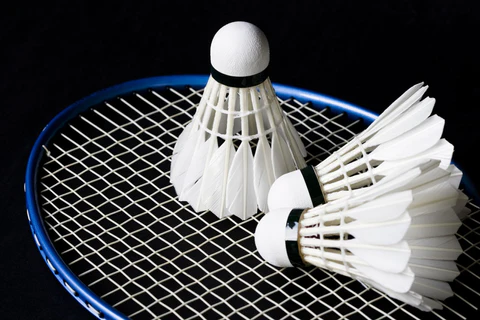Badminton is a popular racquet sport that is played both recreationally and competitively around the world. Here is some information about badminton:
- History: Badminton has its origins in ancient India, where it was initially called “Poona.” British army officers stationed in India in the mid-19th century brought the game to England, where it gained popularity. The Bath Badminton Club in England standardized the rules in the 1870s, and since then, it has grown into an international sport.
- Objective: The primary objective of badminton is to score points by hitting a shuttlecock (also known as a birdie) over the net and into the opponent’s side of the court in a way that it cannot be returned. It is played in both singles (one player on each side) and doubles (two players on each side) formats.
- Equipment:
- Shuttlecock: There are two types of shuttlecocks – feathered and plastic. Feathered shuttlecocks are typically used in professional and competitive play, while plastic ones are more common for recreational play.
- Racket: Badminton rackets are lightweight and come in various materials like aluminum, carbon fiber, or a combination of materials.
- Net: The net divides the court into two equal halves, and its height varies for singles and doubles play.
- Court: A badminton court is a rectangular area divided into two equal halves by a net. The dimensions for a singles court are 17 feet by 44 feet, and for a doubles court, it’s 20 feet by 44 feet.
- Scoring: Badminton uses a rally scoring system, meaning a point is scored on every rally, regardless of who serves. A game is played to 21 points, and a match is usually the best of three games.
- Service Rules: The server must serve from below the waist, and the shuttlecock must be hit below the server’s waist. The server and receiver must stand in their respective service courts during the serve.
- Rules and Regulations: Badminton has specific rules regarding faults, including rules about out-of-bounds, foot faults, and other violations. The rules are designed to ensure fair play and safety for all players.
- Footwork and Strategy: Footwork is crucial in badminton, as players need to be quick and agile to cover the court efficiently. Strategies vary depending on whether you’re playing singles or doubles, and they involve tactics such as smashes, drops, clears, and net shots.
- Competitions: Badminton is an Olympic sport and is played at both amateur and professional levels. There are numerous international competitions, including the All England Open, the Thomas Cup (men’s team), the Uber Cup (women’s team), and the biennial Badminton World Championships. National-level and regional competitions are also held worldwide.
- Health Benefits: Badminton is an excellent sport for cardiovascular fitness, agility, and overall physical health. It can improve hand-eye coordination, balance, and reflexes.
Badminton is a fast-paced and exciting sport that requires skill, strategy, and endurance. Whether you’re a beginner looking for a fun recreational activity or a competitive athlete aiming for the highest levels of play, badminton offers a wide range of opportunities for players of all skill levels.

